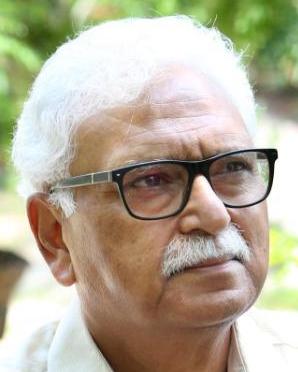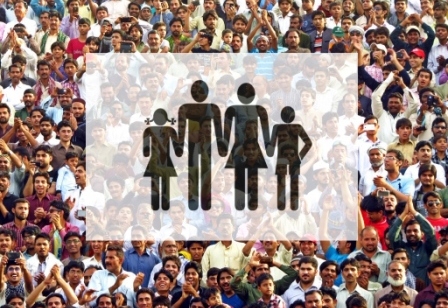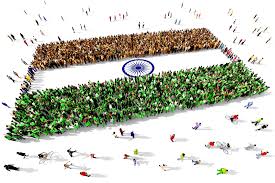

The findings of the latest National Family Health Survey (NFHS), conducted by government of India, has come out with some interesting data and has busted several myths about the population and demographics.
 One of the commonly held belief is that the country is sitting over a population bomb and that the sharply increasing population was responsible for dragging down the country’s resources and economy.
One of the commonly held belief is that the country is sitting over a population bomb and that the sharply increasing population was responsible for dragging down the country’s resources and economy.
There is also a false belief that the population of Muslims was increasing by leaps and bounds and that it might overtake the Hindu population in the near future.
Some of the state governments have either already implemented or are planning to implement rules to debar those having more than two children from contesting municipal elections. There has been demand that similar rules should also be framed for those wanting to contest elections to Parliament and state assemblies.
One of the most significant findings of the latest survey is that the total fertility rate, or the average number of children born per woman, now is 2.0. This implies that our population growth is now a little lower than the replacement level. The standard fertility rate across the world, except where the infant mortality rate is very high, is 2.1 for keeping the population stable.

The Indian rate getting slightly lower than 2.1 implies that our population growth is now in the negative. If the trend continues, our population would actually start declining.
Certainly at one juncture, population explosion was a major issue and these findings might come as a surprise for those who remain under the same impression.
The fact is that the country has seen a successful family planning campaign over the past several decades. Over all improvement is primary health services and lowering of the infant mortality rate has contributed significantly to the success of the family planning programme.
Another significant reason for the lowering of the figure is the spread of literacy and increase in the level of awareness. The trend of late marriages and, in case of urban population, limiting the family to just one child or even no child, is also gaining ground.
The data shows that the total fertility rate was lower than national average in several states like Punjab, Haryana Assam, Gujarat and Karnataka but remains higher in Uttar Pradesh and Bihar where the rate is 2.4 and 3.0 respectively. Significantly the rate in these two states has also declined from the previous survey when it stood at 2.7 and 3.4 respectively.
The data should be also an eye opener for those raising the fears that Muslim population was “deliberately” being increased to overtake the Hindu population. Among the proponents of this theory are some “educated” people who are unaware of the ground reality. The latest survey points out that the TFR rate or the total fertility rate of all religions, including Muslims, has declined.

In fact, in the case of Muslims, it has sharply declined from 4.41 in 1992-93 to 2.62. No doubt it is still a little above the national average but no where a threat to the majority as fear mongers would have us believe. As per the 2011 census, the latest census conducted in the country, the share of Muslim population is 14.2 per cent.
One of the major reasons for the comparative higher birth rate among Muslims has been the comparative backwardness of the community, lower literacy levels and poor economic conditions. More attention needs to be paid in these spheres by the government as well as their community leaders.
Several countries in the world are now grappling with the situation of negative growth of population. These include Canada and Japan where the situation is more serious. Even China has reversed its policy to discourage birth of more than one child per family. It has now started giving incentives for having more than one child per family.
 India is currently the youngest nation in the world on basis of the median age of its citizens. It currently stands at 28.4 years. This implies that half of our population is below the age of 28.4 years. The median age in China is 38.4 years and that of Japan is 48.4 years !
India is currently the youngest nation in the world on basis of the median age of its citizens. It currently stands at 28.4 years. This implies that half of our population is below the age of 28.4 years. The median age in China is 38.4 years and that of Japan is 48.4 years !
We must make the best efforts to leverage this advantage. If we don’t do it now, it may be too late as we might become the oldest nation in the decades to come if the current trend continues. ![]()
_____________
Also Read:
Centre’s Opaque Auction Rules For Pulses Rip Off Govt Coffers, Help Millers Strike Rich
Need to amend laws like UAPA to provide for punishment for those who slap false cases
Global Arms Trade: Who are the real winners?
Why not 40 pc tickets for women in Punjab and elsewhere?
Punjab – How a deadly cocktail of Agri-Water-Energy nexus going to destroy it?
North Pole and the ideological conflict of RSS & Hindutva
Politics of Symbolism: Dalit Chief Ministers in India

Disclaimer : PunjabTodayTV.com and other platforms of the Punjab Today group strive to include views and opinions from across the entire spectrum, but by no means do we agree with everything we publish. Our efforts and editorial choices consistently underscore our authors’ right to the freedom of speech. However, it should be clear to all readers that individual authors are responsible for the information, ideas or opinions in their articles, and very often, these do not reflect the views of PunjabTodayTV.com or other platforms of the group. Punjab Today does not assume any responsibility or liability for the views of authors whose work appears here.
Punjab Today believes in serious, engaging, narrative journalism at a time when mainstream media houses seem to have given up on long-form writing and news television has blurred or altogether erased the lines between news and slapstick entertainment. We at Punjab Today believe that readers such as yourself appreciate cerebral journalism, and would like you to hold us against the best international industry standards. Brickbats are welcome even more than bouquets, though an occasional pat on the back is always encouraging. Good journalism can be a lifeline in these uncertain times worldwide. You can support us in myriad ways. To begin with, by spreading word about us and forwarding this reportage. Stay engaged.
— Team PT


Copyright © Punjab Today TV : All right Reserve 2016 - 2025 |